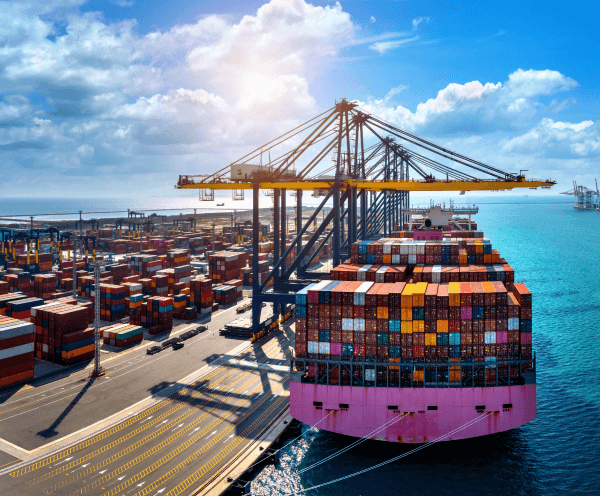Seaports are the gateways to international trade. They are centres of international trade that control the flow of goods between distant countries and often the lifeblood of the local economy. 2022 brought a revived interest in seaports and their operations, as a sudden boom in consumer demand caused a surge in shipping volumes and created a bottleneck in many major ports.
Asia, the world’s largest and most culturally varied continent, is also the main driver of the expansion of international shipping. So, it should come as no surprise that this continent is also home to some of the best ports in the world.
The top 10 ports in Asia are shown below, ordered by size, traffic, and rank.
- Port of Singapore
Due to its size and volume of traffic, the Port of Singapore is ranked second in the world. This port handled 37.2 million TEU in 2019. Every few minutes, a ship is claimed to enter or exit the Singapore port.
Throughout 200 shipping lines connect it to hundreds of ports throughout the globe. There may be up to 1,000 ships in the port alone at any given moment.
2. Port of Shanghai
In 2005, the processed cargo in Shanghai’s port exceeded 443 million tonnes, outpacing that of Singapore. The rapid economic growth of China has a major impact on the success of this port.
This port set a new record in 2020 with a container volume of 43.5 million TEU. The port was able to maintain its position as the busiest container port in the world as a result.
3. Port of Laem Chabang, Thailand
Thailand’s deep central seaport is Port Laem Chabang. With an 8 million TEU traffic volume annually, this port is also the fourth largest in South-East Asia.
There are several small ports there as well as seven terminals, including Thailand’s most cutting-edge terminal, Terminal D.
4. Port of Busan
Busan promotes itself as the link between Asia and the Pacific Ocean. As Korea’s main port, it handles 81% of the country’s containerized goods. There is enough in the Port of Busan to handle 91 million tonnes of cargo.
Additionally, this port is the sixth busiest in the world. In 2020, there will likely be 23.5 million TEU of traffic.
5. Port of Hong Kong
The Port of Hong Kong is still located in one of the most successful facilities in the world, having formerly been the busiest port in the world before the Singapore Port grabbed the crown.
This port has shown remarkable growth despite the fierce competition from Shanghai, and it held containers worth 19.8 million TEUs in 2016. One of the busiest and most successful ports in the world is this one.
6. Port Kelang
Port Kelang, the primary maritime hub for Malaysia, is now ranked 14th in the world. This port is also connected to a train that serves Kuala Lumpur, which is advantageous for trade. Traffic through Port Kelang was 12.3 million TEU in 2018. Additionally, this port is South-East Asia’s second-largest port.
7. Port of Tokyo
This port is ranked 14th in the world and is situated in an area with concentrated economic growth and a population of 40 million. This port produced a record-breaking 3,594,000 TEUs in 2005.
The largest vessels can be accommodated in the Port of Tokyo, according to reports. The oil container terminal’s berths have a sizable capacity.
8. Jawaharlal Nehru Port
Most of India’s containerized trade is handled by Jawaharlal Nehru Port, the country’s main container port. The port has connections to important Indian trains and roadways and borders the Arabian Sea. The port’s container volume during 2018 and 2019 was 5.05 million TEU.
9.Port of Tanjung Palapas, Malaysia
The third-largest port in South-East Asia and one of the top 20 ports in the world is Tanjung Palapas. Approximately 12 million TEU pass through this port each year.
This port stands out because it has advanced technologically more than most Asian ports have. It broke the vessel utilisation record a third time in a row in July 2019.
10.The Port of Shenzhen
One of the largest ports in China is the Port of Shenzhen. This port has some of the best technological and economic development in the entire world.
The name of this port refers to a number of ports along the coastline. The port, which houses the corporate offices of some 40 shipping firms, has encouraged the growth of 130 international container lines.
The port has connections to almost 300 other ports across many nations. With a throughput of 27.7 million TEUs in 2018, it was ranked as the third-largest container port in the world.
For seaports globally, 2022 set records for both traffic and income. Supply chain planners have been compelled to take new suppliers, trade routes, and freight partners into consideration because of the difficulties this has caused with container capacity and the elevated freight charges. Elite Shipping offers creative solutions for LCL and FCL freight while assisting shippers in navigating the shifting market. For a free consultation and a glimpse at our online goods marketplace, get in touch with us right away!


